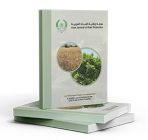Y.M. Ismail*, N. Ali and A. Boubou
Plant Protection Department, Faculty of Agricultural Engineering, Latakia University, Latakia, Syria.
*Email address of the corresponding author: [email protected]
Received: 15/9/2024; Accepted: 23/8/2024
A Regional Scientific Journal Published Four Times a Year by the Arab Society for Plant Protection
Y.M. Ismail*, N. Ali and A. Boubou
Plant Protection Department, Faculty of Agricultural Engineering, Latakia University, Latakia, Syria.
*Email address of the corresponding author: [email protected]
Received: 15/9/2024; Accepted: 23/8/2024
Citrus fruits are one of the main crops in Syria, and their cultivation is mainly concentrated on the Syrian coast region. Citrus nematode Tylenchulus semipenetrans is one of the main pathogens that threaten citrus cultivation. There is no recent data available on the spread of citrus nematode along the Syrian coast or assessment of the factors affecting its population density. The preset study aimed to determine the geographical spread and population density of citrus nematode communities in soil samples of different citrus growing sites in the governorates of Latakia and Tartous; and determine the role of citrus varieties and some physical and chemical soil characteristics in the spread of these nematodes and the density of their communities. 150 soil samples were collected from 35 orchards along the Syrian coast (111 samples from Latakia governorate and 39 samples from Tartous Governorate), during the period extending from October 2021 to December 2022. The results obtained showed that T. semipenetrans is widely distributed along the Syrian coast, as the prevalence rate reached 91.39%, with a greater prevalence in Tartous governorate (100%) compared to Latakia Governorate (89.18%), and with a higher population density. The results obtained also showed that the highest nematodes population density was recorded on the Al-Mawardi and Al-Mayer varieties (average number of 6,022 nematodes/250 ml soil and 5,640 nematodes/250 ml soil, respectively), and the lowest value was recorded on the Al-Yafawi variety (232 nematodes/250 ml soil) and Al-Youssoufi variety (534 nematodes/250 ml soil). Multivariate statistical analysis (Co-inertia method) showed that nematodes population density was related to some physical and chemical properties of the soil, such as texture, organic matter content, pH, and Electrical conductivity. The highest densities were found in silt soils with a high content of organic matter, an alkaline pH, and low salinity. Whereas low densities were found in sandy soils. Data generated by this investigation represent up-to-date information on the spread of citrus nematodes in citrus orchards along the coastal region of Syria. They also shed light on some of the factors that enhance or reduce the citrus nematodes density, such as citrus varieties and physical and chemical soil characteristics. This data can be used in developing improved nematodes management programs for citrus orchards, especially in some locations and on some varieties where population densities are high and exceed the threshold for economic damage caused by nematodes.
Citrus, varieties, Syria, citrus nematode, Tylenchulus semipenetrans.

